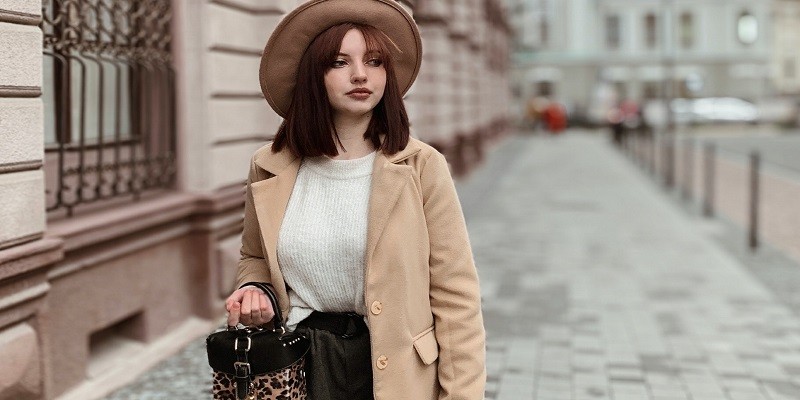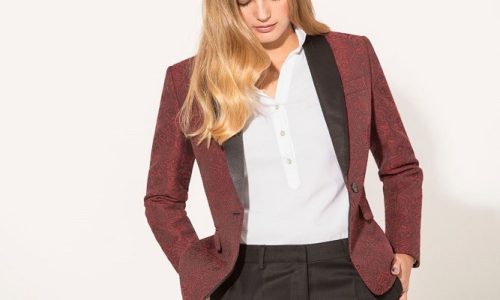Last Updated on June 18, 2025 by Jaclyn A. Neeley
When it comes to personal style, understanding how to mix and match outfits can open the door to a myriad of fashion possibilities. This essential skill not only enhances your wardrobe’s versatility but also allows you to express your unique personality and style. The ability to blend colors, patterns, and textures successfully can make dressing a creative and enjoyable process.
Understanding Color Theory in Fashion
Color is the backbone of any outfit, and understanding how to use it is the first step to becoming proficient at mixing and matching. Color theory in fashion is all about knowing which hues complement each other. A color wheel can be a handy tool in this regard: complementary colors are opposite each other, analogous colors are side by side, and triadic colors form a triangle. For example, a classic complementary color combination is blue and orange, while a common analogous combination might be green, light green, and yellow.
Understanding color relationships will not only guide you when you’re pairing clothing items but also when you’re choosing accessories. Bear in mind, though, that color theory is a guide, not a strict rule. Feel free to experiment with unexpected combinations if they align with your personal style.
The Power of Neutrals
Neutral colors such as black, white, beige, grey, and navy are considered the workhorses of any wardrobe. They’re versatile, timeless, and easy to match with almost any other color. Consider neutrals as your base or canvas: you can add a pop of color with a vibrant blouse or a statement necklace, or keep it monochrome for an elegant, understated look.
Experimenting with a medley of neutral shades adds a layer of sophistication to your ensemble. Picture a delicate light grey blouse paired with dark grey trousers and a sharp black coat – a striking monochrome display. Additionally, metallics, such as gold and silver, often overlooked, can be treated as neutrals, lending a hint of opulence to any outfit – a range of which can be found at your nearest wholesale jewelry store.
The Role of Accessories
Accessories serve as the final flourish to any ensemble, providing the opportunity to infuse an element of personal flair. They can seamlessly connect various aspects of an outfit, like a scarf that subtly echoes the color of your footwear, or a handbag that harmoniously complements your blouse.
Let’s not disregard the transformative power of jewelry. A pair of bold earrings or a carefully curated collection of bangle bracelets can enhance even the most straightforward outfit. Wholesale jewelry stores present a plethora of options catering to every style and budget – an invaluable asset when looking to diversify your accessory repertoire.
Mastering the Art of Layering
Layering is a compelling technique to imbue complexity and intrigue into an outfit, offering boundless potential to mingle colors, patterns, and fabrics. Begin with a foundational layer (a pristine white tee or a tailored button-up shirt), introduce a middle layer (perhaps a snug sweater or a classic denim jacket), and conclude with an outer layer (consider a refined trench coat or a sleek blazer).
But let’s be clear – layering is not just about piling on clothes; it’s about creating a cohesive look. Each piece should complement the others, not fight for attention. Think of your outfit in terms of weight, texture, and color balance. Layer lighter fabrics under heavier ones, mix textures for visual interest, and use color to tie everything together.
Mixing Patterns and Textures
Integrating patterns and textures into your attire can add a certain depth and stimulate visual interest. The challenge lies in achieving equilibrium so your look doesn’t veer into the realm of being overbearing. When amalgamating patterns, adhere to a shared color palette – for instance, a blue and white striped shirt might effortlessly sync with a floral skirt that features shades of blue.
Textures, on the other hand, are about juxtaposing various materials to accentuate their unique properties. Imagine a chunky knit sweater coupled with a glossy leather skirt or a smooth silk blouse against rugged denim jeans – a captivating contrast of touch. However, these are guidelines rather than stringent rules. Fashion is a realm for personal expression – so, don’t hesitate to break the mold!
The Importance of Fit
While color, pattern, and texture play crucial roles in mixing and matching outfits, none of these matter if your clothes don’t fit well. An ill-fitting garment can throw off the balance of your entire outfit, while well-fitted pieces can make even a simple ensemble look polished and put together.
Understanding your body type and what cuts and styles flatter your shape is key. For instance, if you’re on the petite side, you may find high-waisted pants or skirts visually extend your figure. For those graced with height, elongated silhouettes may complement you. When in doubt, the wisdom of a tailor can be invaluable.
Dressing for Your Body Type
Understanding your body type is an essential aspect of mastering the art of mixing and matching outfits. Different cuts, styles, and patterns flatter different body shapes, so it’s important to know what works best for you. A-line skirts, for instance, are universally flattering, while v-necks tend to suit people with broader shoulders or fuller busts.
However, always remember that these are guidelines, not hard and fast rules. The most important thing is that you feel comfortable and confident in what you’re wearing. If you love a particular style that supposedly doesn’t ‘suit’ your body type, wear it anyway! Fashion should be a means of self-expression, not restriction.
Experimentation is Key
Fashion is inherently subjective and personal. What works for one person might not work for another. Therefore, don’t be afraid to experiment with your outfits. Try different color combinations, mix patterns you wouldn’t usually pair together, and play with various styles until you find what works for you.
Remember, making ‘mistakes’ is part of the process. Not every outfit will be a hit, and that’s okay. The important thing is that you’re developing your sense of style and having fun along the way. Stepping out of your comfort zone is how you grow and evolve as a fashionista.
Conclusion
Mixing and matching outfits like a pro requires a balance of understanding basic fashion principles, knowing your personal style, and being willing to take risks. By mastering color theory, utilizing neutrals, layering effectively, mixing patterns and textures, accessorizing wisely, ensuring a good fit, balancing casual and formal elements, dressing for your body type, and experimenting, you can create unique and stylish outfits that express who you are.
Remember, there’s no right or wrong in fashion, only what makes you feel best. So, use these tips as a guide, but don’t be afraid to bend or break the ‘rules’ and create a style that’s uniquely yours. After all, fashion should be fun, personal, and a means to express yourself.







